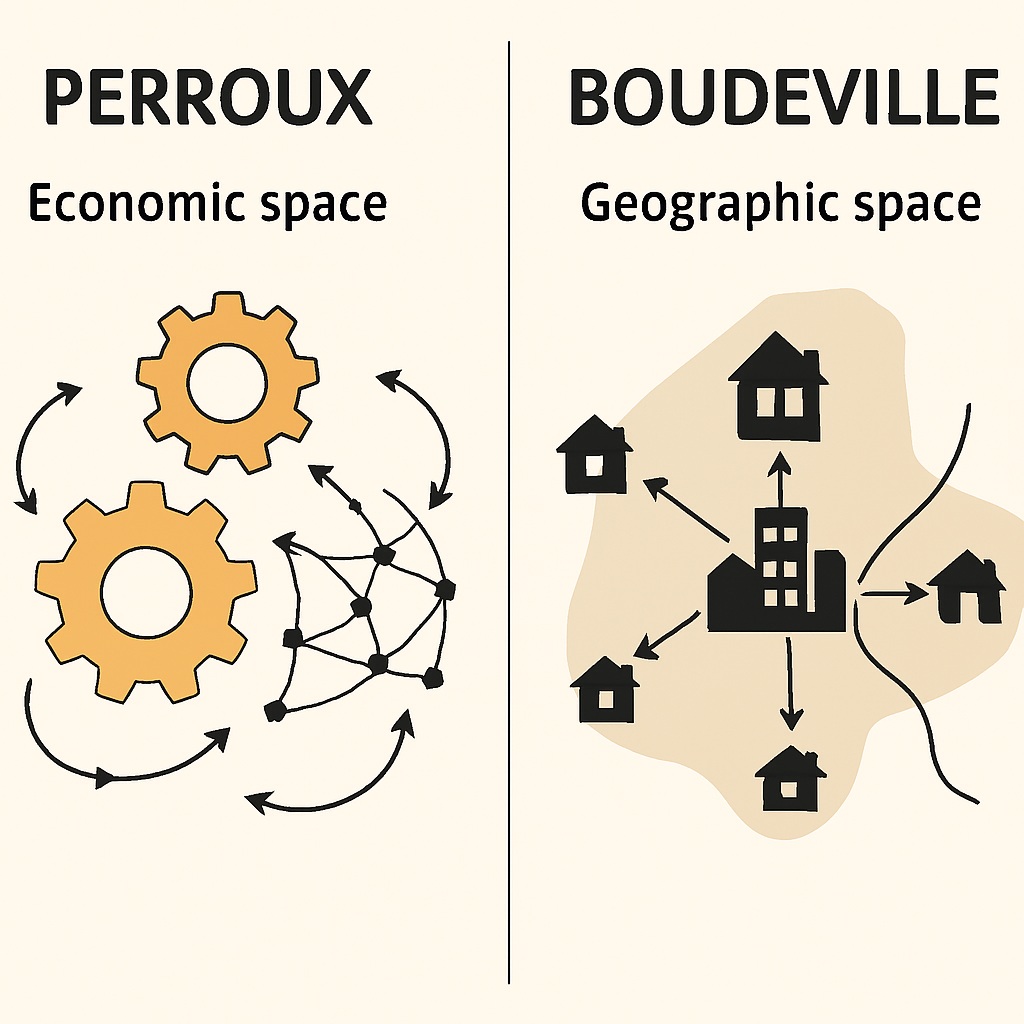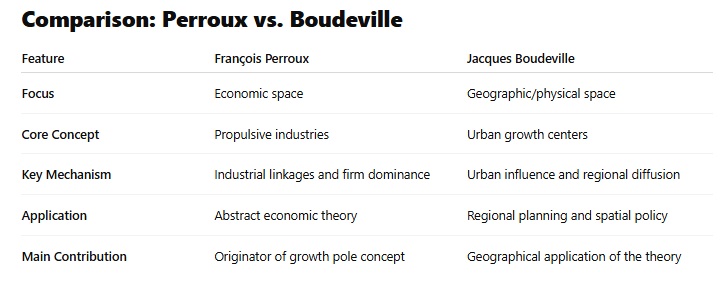The theories of Perroux and Boudeville are important contributions to the study of regional development. Both theorists sought to understand the economic forces that shape the growth and decline of regions.

Table of Contents
Perroux’s Theory of Growth Poles
Perroux’s Theory of Growth Poles explains regional development as the result of the concentration of economic activities in specific regions. Perroux argued that the growth of one industry or sector in a region can stimulate the growth of other industries, creating a virtuous cycle of economic growth.

According to Perroux, growth poles are regions that have a high concentration of economic activities and are characterized by a strong network of economic interdependencies. The growth of a growth pole can have a positive impact on the surrounding region, creating new job opportunities and increasing the demand for goods and services.
Key Features
-
Economic Space vs. Geographic Space:
Perroux’s theory is non-geographical in nature. He spoke of economic spaces, meaning the abstract network of firms and industries—not physical land or cities. -
Dominant Firms and Industries:
Growth starts from large, dynamic firms or industries, called “propulsive industries”, which have strong forward and backward linkages. These firms influence surrounding sectors through innovation, demand, and investment. -
Spread Effects:
The dynamic activities of propulsive firms generate spread effects (positive spillovers) and sometimes backwash effects (negative impacts like resource drain) on the rest of the economy. -
Trickle-Down Process:
Growth initiates at the center (pole) and diffuses outwards to the periphery.
Limitations:
-
Lacked direct geographical relevance.
-
Focused heavily on industry and firm-level dynamics without spatial application.
Boudeville Theory of Equilibrium
Boudeville’s Theory of Equilibrium explains regional development as the result of a dynamic balance between different economic activities. Boudeville argued that regions develop in response to changes in the economic environment, and that the distribution of economic activities is shaped by the competition between different regions.
According to Boudeville, equilibrium is achieved when the economic activities of a region are balanced and complementary. For example, a region with a strong manufacturing sector may also have a strong service sector to support it. This balance allows the region to adapt to changes in the economic environment and maintain its competitiveness over time.
Key Features of Boudeville’s Theory
-
Geographical Space Focus:
Unlike Perroux, Boudeville placed growth poles within physical space, like cities or regions that serve as development hubs. -
Urban-Based Growth Poles:
A growth pole is defined as an urban center that includes propulsive industries which drive growth in surrounding areas. -
Spread Mechanisms:
Boudeville identified:-
Cumulative causation (growth attracts more growth),
-
Diffusion effects (economic benefits spread to the hinterland),
-
Polarization (can lead to imbalances if growth is too concentrated).
-
-
Regional Development Policy:
Boudeville’s work became the basis for regional planning in France and elsewhere in Europe, where growth centers were identified and targeted for industrial investment.
Applications of Perroux and Boudeville’s Theories
Perroux and Boudeville’s theories have been applied in a variety of contexts to understand regional development and inform policy decisions. For example, the concept of growth poles has been used to identify areas of economic opportunity and to guide investment decisions. The concept of equilibrium has been used to identify areas of economic vulnerability and to develop strategies for economic diversification.
Critiques of Perroux and Boudeville’s Theories
Perroux and Boudeville’s theories have been criticized for their reliance on assumptions about the rationality of economic actors and the homogeneity of the population. Critics argue that the theories do not take into account the social, political, and cultural factors that shape regional development.
Comparison: Perroux vs. Boudeville

Despite their limitations, Perroux and Boudeville’s theories provide important insights into the complex processes that shape regional development. By understanding the economic forces that drive regional growth and decline, policymakers can develop strategies to promote economic development and reduce economic disparities between regions.